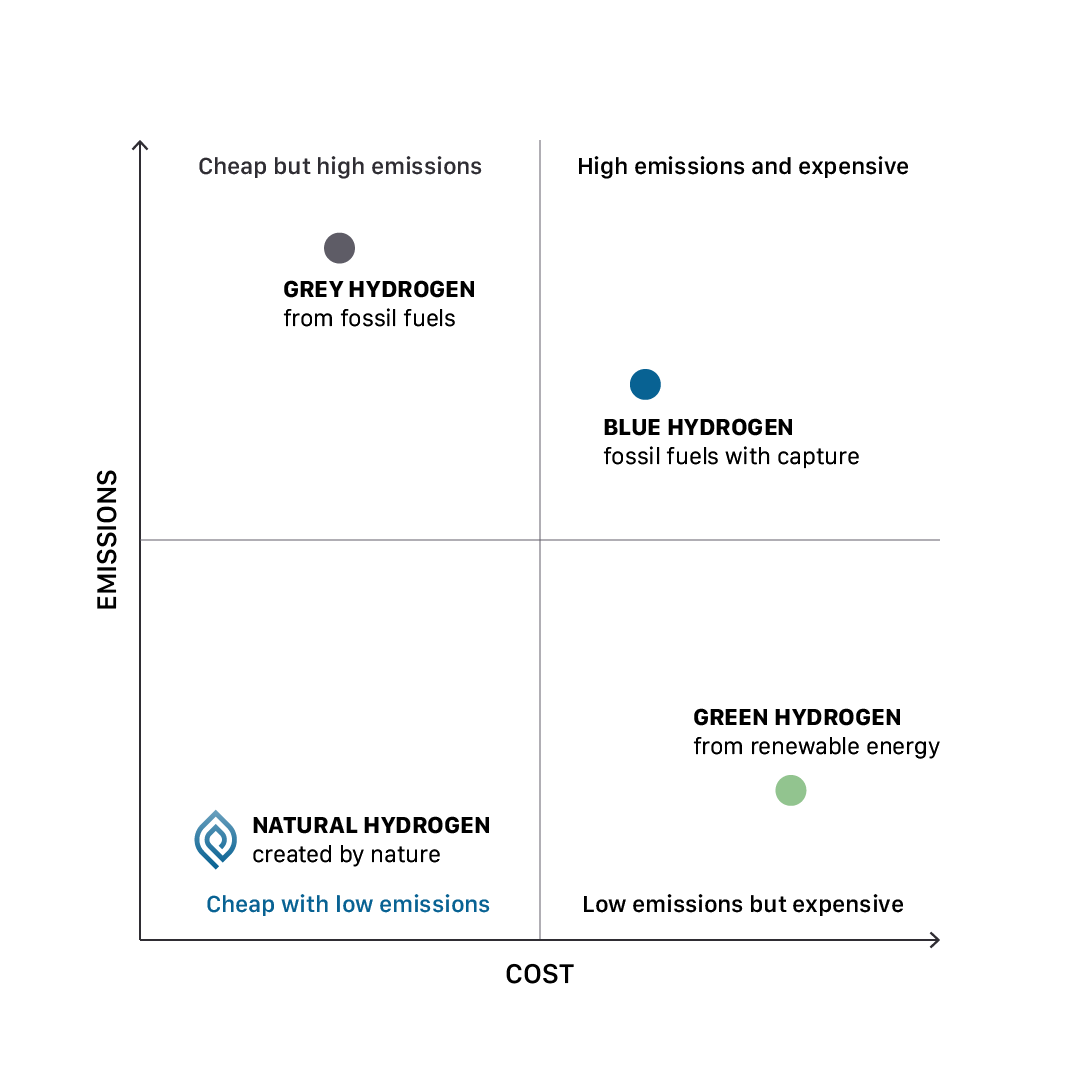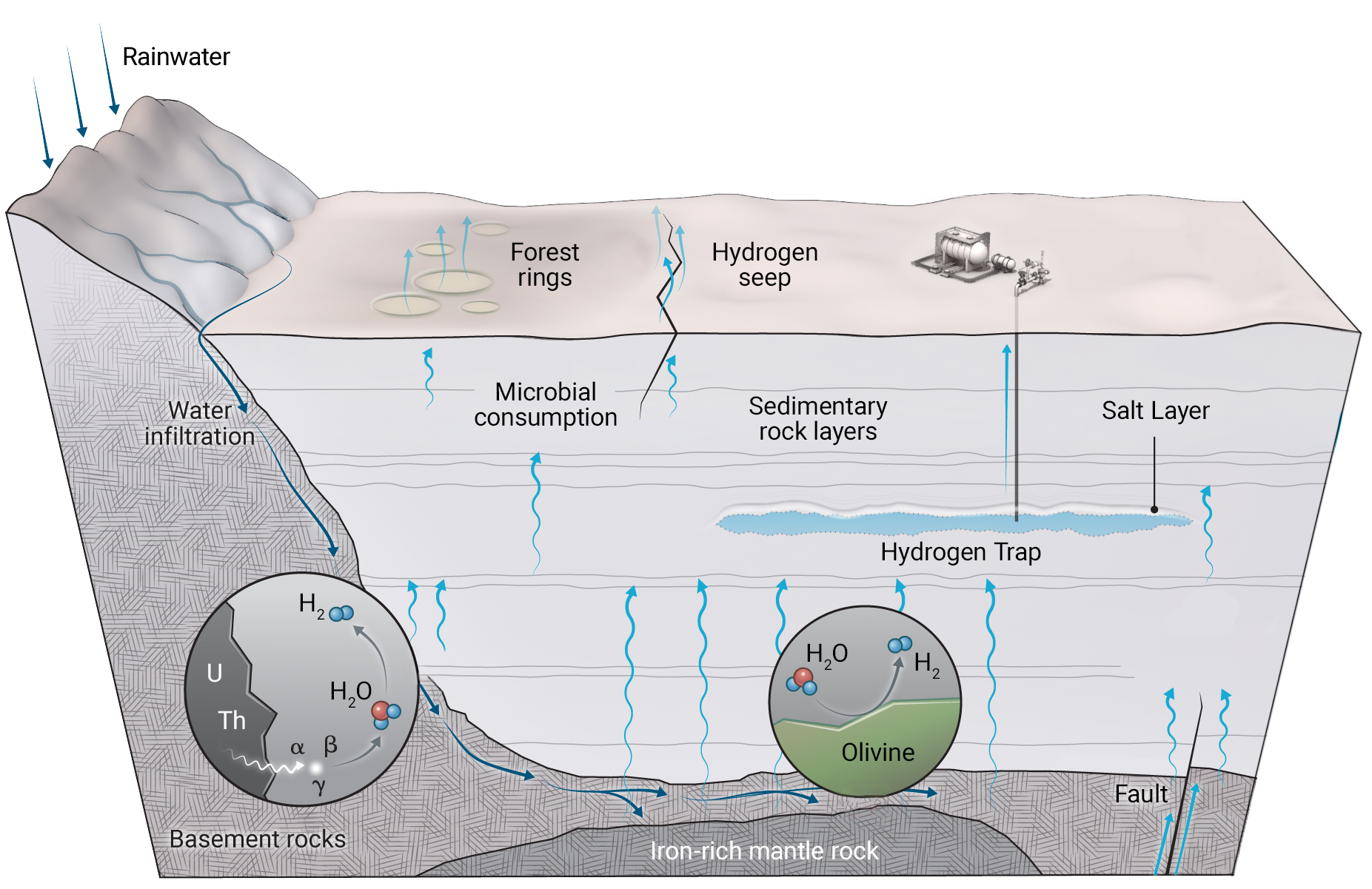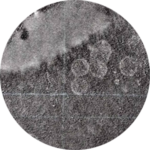A Greener Alternative?
HYDROGEN SOURCES
Current hydrogen supply is both costly and/or dirty but discovery of natural hydrogen reserves could be the solution:

GREY/BLUE HYDROGEN
Produced from fossil fuels accounts for ~95% of production and costs1 ~$2/kg2

GREEN HYDROGEN
Produced from renewable electricity via electrolysis costs 3x higher (vs. grey hydrogen)2

NATURAL HYDROGEN
Produced at a cost as low as $0.5-1/kg before taking into account subsidies or production tax credits which go up to $3/kg2



SUBCIRCULAR DEPRESSIONS
Peculiar circular impressions in boreal forests of northern Canada which are commonly hundreds of meters in diameter and centered on accumulations of chemically reduced substances in groundwater, overburden, or rock. The circular outlines are defined by a change in vegetation at the rims of the rings.1
HYDROGEN EXPLORATION
HYDROGEN GEOLOGY
- SERPENTINIZATION: the interaction of water with iron-rich rocks resulting in the generation of H2 as a by-product. Thes rocks include crystalline basement rocks (i.e. mafic and ultramafic rocks), granitic rocks, and sedimentary rocks (i.e. shales).
- RADIOLYSIS: the interaction of water with trace radioactive elements (i.e. thorium and uranium) contained within the rocks which leads to the generation of H2 as a by-product
- DEEP-SEATED: hydrogen generated from the Earth’s core or mantle that may travel through tectonic plate boundaries and faults (such as volcanic degassing detected during or after eruptions)
- Surficial detection includes the observation of subcircular depressions, which represent potential pathways for hydrogen gas migration
- Hamilton, S.M. and Hattori, K.H. (2008). Case History. Spontaneous potential and redox responses over a forest ring. Geophysics May 2008 Issue. Pages B67-B75
- Diagram: science.org/content/article/hidden-hydrogen-earth-may-hold-vast-stores-renewable-carbon-free-fuel
Stay Informed
News and Updates


